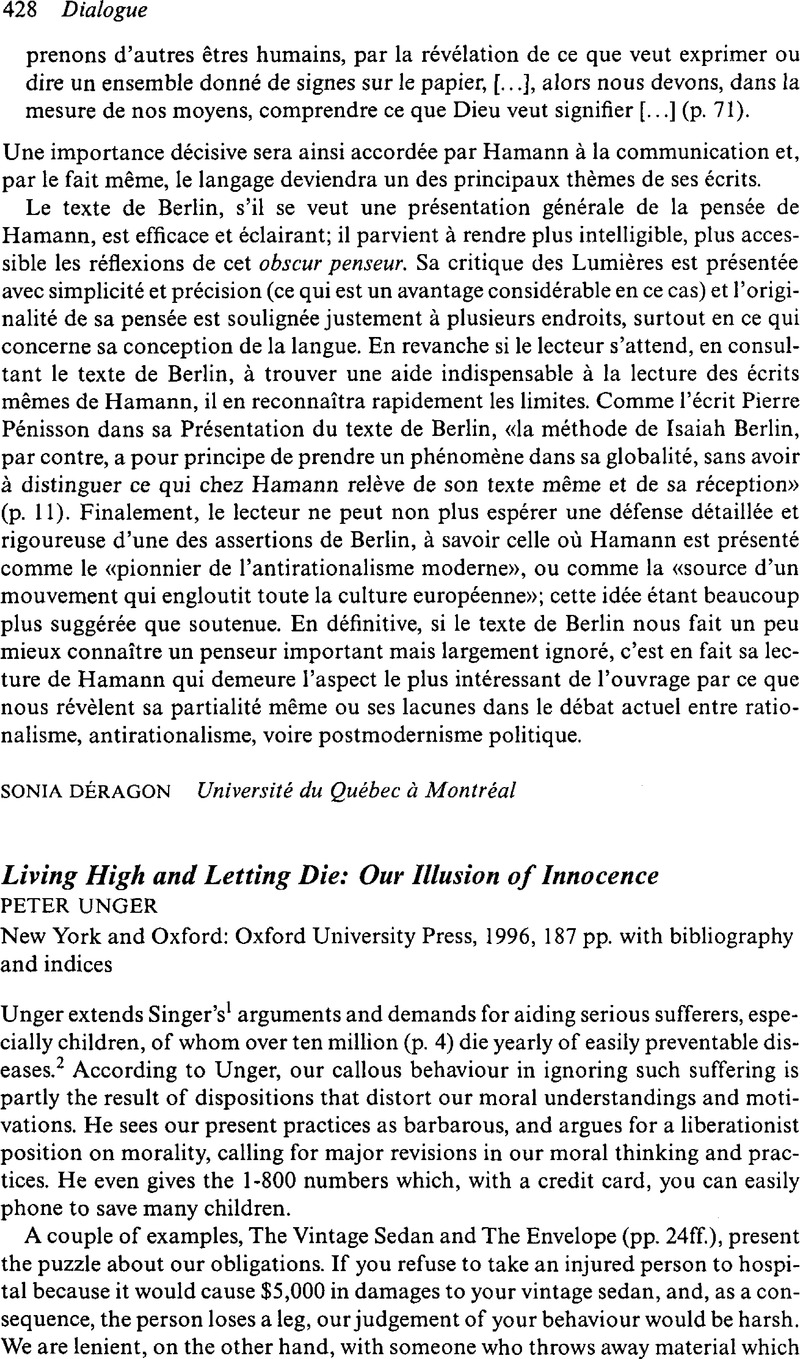No CrossRef data available.
Published online by Cambridge University Press: 13 April 2010

1 See Singer, Peter, “Famine, Affluence and Morality,” Philosophy and Public Affairs, 1 (1972): 229–43.Google Scholar
2 All numbers in parentheses refer to the relevant page in Unger's book. There is evidence that the number of preventable deaths of children is falling, although it is still many millions per year.
3 George, Susan, “The Debt Boomerang,” in 50 Years Is Enough: The Case Against the World Band and the International Monetary Fund, edited by Danaher, Kevin (Boston, MA: South End Press, 1994), p. 29.Google Scholar It is relevant that our wealth may come (partly) from the exploitation of communities with children in absolute poverty. See Belsey, Andrew, “World Poverty, Justice and Equality,” in International Justice and the Third World, edited by Attfield, Robin and Wilkins, Barry (London and New York: Routledge, 1992), pp. 35–49.CrossRefGoogle Scholar